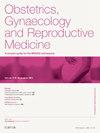Intrapartum fetal monitoring
Q3 Medicine
Obstetrics, Gynaecology and Reproductive Medicine
Pub Date : 2025-03-01
DOI:10.1016/j.ogrm.2024.12.003
引用次数: 0
Abstract
Fetuses are physiologically adapted to cope with labour. However, some fetuses are at risk of hypoxic injury. Whether fetuses are monitored using intermittent auscultation (IA) or continuous cardiotocography (CTG), knowledge of the fetal physiological responses to labour and the various mechanisms of hypoxia is vital to provision of appropriate interventions. Hypoxia in labour can be caused by umbilical cord compression and/or utero-placental insufficiency, sometimes potentiated through infection and inflammation. Recognition of intrapartum risks such as meconium stained liquor, bleeding or maternal pyrexia aid in determining the individual risk of fetal hypoxia but a holistic view needs to be maintained. Detection is only the first step, then requiring appropriate escalation, communication and timely action which are reinforced by initiatives including the Avoiding Brain injury in Childbirth (ABC) programme and the Each Baby Counts (EBC) project. This paper aims to provide an overview of intrapartum fetal monitoring founded in physiological interpretation and insights into new recommendations by the ABC programme.
产时胎儿监护
胎儿在生理上适应了分娩。然而,有些胎儿有缺氧损伤的危险。无论胎儿是使用间歇听诊(IA)还是连续心脏造影(CTG)进行监测,了解胎儿对分娩的生理反应和各种缺氧机制对于提供适当的干预措施至关重要。分娩时缺氧可由脐带受压和/或子宫胎盘功能不全引起,有时因感染和炎症而加剧。识别产时风险,如胎粪染色液、出血或产妇发热有助于确定胎儿缺氧的个体风险,但需要保持整体的观点。检测只是第一步,然后需要适当的升级,沟通和及时行动,这些都通过包括避免分娩脑损伤(ABC)计划和每个婴儿计数(EBC)项目在内的倡议得到加强。本文旨在概述产时胎儿监测建立在生理解释和见解到ABC节目的新建议。
本文章由计算机程序翻译,如有差异,请以英文原文为准。
求助全文
约1分钟内获得全文
求助全文
来源期刊

Obstetrics, Gynaecology and Reproductive Medicine
Medicine-Obstetrics and Gynecology
CiteScore
0.90
自引率
0.00%
发文量
67
期刊介绍:
Obstetrics, Gynaecology and Reproductive Medicine is an authoritative and comprehensive resource that provides all obstetricians, gynaecologists and specialists in reproductive medicine with up-to-date reviews on all aspects of obstetrics and gynaecology. Over a 3-year cycle of 36 issues, the emphasis of the journal is on the clear and concise presentation of information of direct clinical relevance to specialists in the field and candidates studying for MRCOG Part II. Each issue contains review articles on obstetric and gynaecological topics. The journal is invaluable for obstetricians, gynaecologists and reproductive medicine specialists, in their role as trainers of MRCOG candidates and in keeping up to date across the broad span of the subject area.
 求助内容:
求助内容: 应助结果提醒方式:
应助结果提醒方式:


